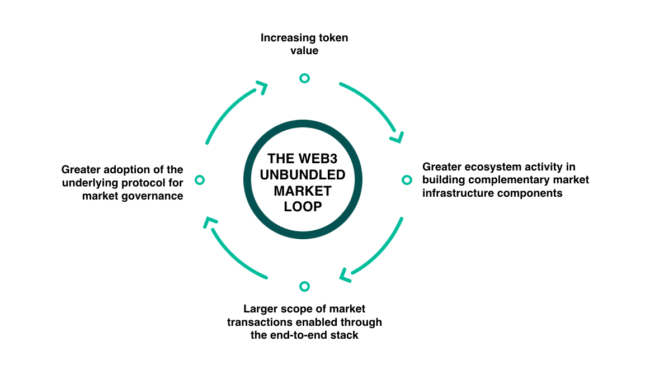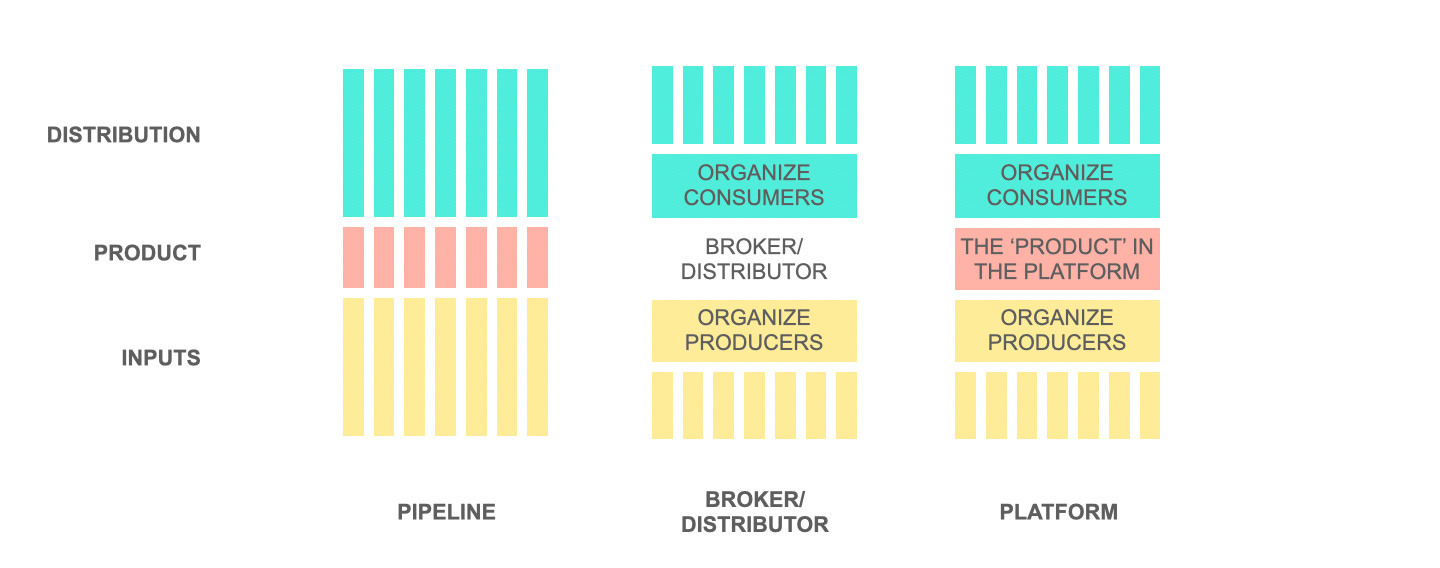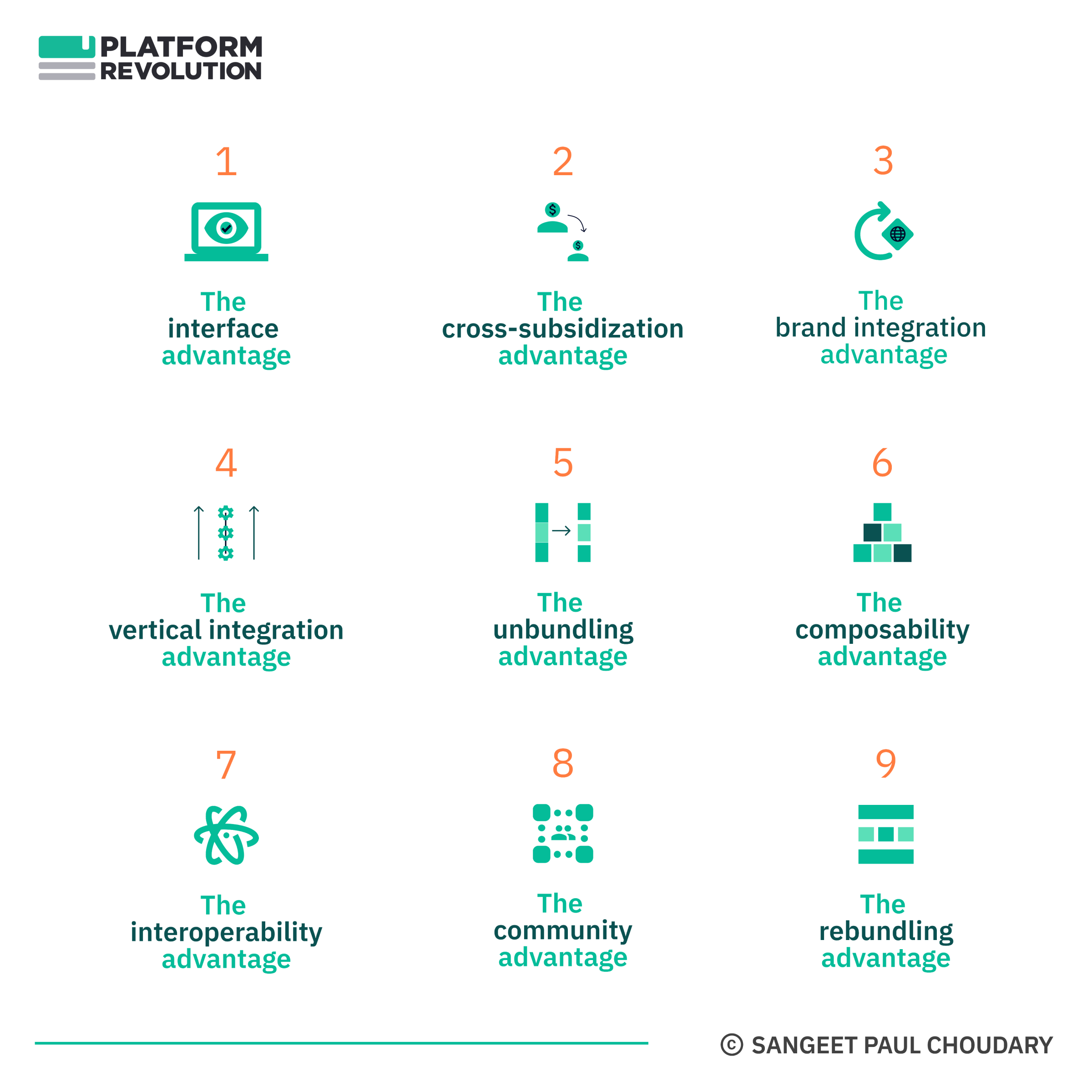Strategy
Unbundling the unbundlers – The end of winner-takes-all
Global scale networks, venture funding, data hoarding, and capital-labor inequality have come together to find a new home in the platform economy. Platforms concentrate and create winner-take-all economics at a scale that we haven’t seen since the Gilded Age.
All that is, however, poised to change.
Web3 holds the promise of fundamentally rearchitecting market infrastructure and governance, backed by protocols designed for minimal extraction. Done right, this would move us from a world of winner-takes-all to a world of winners-share-all, as they build together and benefit together.
Earlier this year, I joined forces with Boson Protocol as Advisor, Market Design, to work on designing markets for a Web3 world. A lot of my work in Platform Revolution and Platform Scale codified market design for a Web2 world. Rethinking this for a Web3 world is fascinating, both from an intellectual and from a building-in-real-time perspective.
This essay is the first of a series on reimagining markets for a Web3 world.
Let’s dive right in!
A brief history of Web2
As digital technologies start getting adopted in the enterprise, we’ve increasingly seen the unbundling of the traditional corporation. John Hagel in his seminal 1999 paper – Unbundling the corporation – was among the first to articulate this shift. Over the course of the two decades that followed, we’ve seen the corporation increasingly get unbundled as new generations of digital technologies progressively reduce transaction costs.
Even as the Web2 era saw traditional vertically integrated corporations getting unbundled, there was a new form of ‘horizontal concentration’ created by marketplaces and platforms. These marketplaces and platforms organized entire markets by bundling market infrastructure and governance for these participants.
In Platform Scale, I identify two primary functions that platforms and marketplaces perform.
- First, they provision an infrastructure to facilitate market transactions.
- Second, they govern the transactions that ensue.
While platforms and marketplaces vertically unbundled production from distribution and encouraged distributed and decentralised production, the ability to horizontally bundle market infrastructure and governance enabled them to centralize governance and rewards.
Web3 provides a new paradigm for managing and enabling transactions. In the management of markets, the single biggest shift enabled by Web3 is the unbundling of market infrastructure from market governance.

Just because something can be decentralized doesn’t mean it can support the incentives for decentralized innovation.
Feel Free to Share
Download
Our Insights Pack!
- Get more insights into how companies apply platform strategies
- Get early access to implementation criteria
- Get the latest on macro trends and practical frameworks
In the Web2 world, market infrastructure and market governance were bundled by platforms. Amazon, Ebay, Upwork, Uber, and other such marketplaces bundle both market infrastructure (in the case of Amazon, even physical infrastructure through FBA and Amazon Logistics) and market governance.
In the Web3 world, market infrastructure gets unbundled from market governance. While the core components of market governance are encoded into the protocol layer, components of market infrastructure may be built by the ecosystem around the protocol.
1. Decentralization of market infrastructure + Standardization of market governance
Web2 platforms created value through standardizing transactions, reducing transaction costs, and making transactions more efficient. To do this, they bundled standardised infrastructure with reliable governance. To gain the benefits of reliable governance, participants were required to pay a tax for using one-size-fits-all market infrastructure.
Effectively, by unbundling market infrastructure from market governance, Web3 provides the best of both worlds.
The protocol layer still provides reliability of market governance, without requiring a central intermediary or arbiter. However, market infrastructure components are decentralized and may be owned across various players in the ecosystem. This decentralisation allows a greater degree of customisation in market infrastructure while also allowing shared ownership of market infrastructure by the ecosystem.
2. From winner-takes-all to winners-share-all
Web2 platforms are often associated with ‘winner-takes-all’ dynamics where a single firm concentrates market value and capture.
The shared ownership of market infrastructure in Web3 combined with minimal extraction during market governance by the protocol (minimally extractive protocols) leads to a ‘winners-share-all’ dynamic.
As the ecosystem builds market infrastructure components in a decentralised manner, value accrues at the protocol layer (growing token value) which provides reliability of governance across all market infrastructure components. Conversely, as the token value increases, more market participants come on board to create new forms or market infrastructure. Protocols designed for minimal extraction are best able to kickstart and sustain this feedback loop, leading to an ever-increasing winners-share-all feedback loop.
3. From marketplaces to agents: Unbundling of demand-side and supply-side interfaces
By unbundling market governance from market infrastructure, Web3 allows further unbundling within the market infrastructure components. Web2 marketplaces bundled demand-side onboarding, decision support systems, and tools with supply-side onboarding, decision support systems, and tools. Web3 unbundles the two.
The market governance embedded at the protocol layer enables market infrastructure components to be unbundled to their most basic units.
For instance, a marketplace like Ebay bundles seller onboarding, seller analytics, buyer onboarding, buyer decision support, search functionalities, and exchange infrastructure. All these components will be unbundled in a Web3 world.
As a result, we move away from central market-maker architectures to decentralised agent-based architectures, all coordinated by a shared, common protocol. Think Hollywood-style talent markets minus the relationship-based gatekeeping.
4. It’s open market economics all the way down
Web2 platforms encourage open market competition in production by reducing search costs for consumers, commoditizing distribution for producers and encouraging price transparency. This leads to open market competition among producers to a marketplace and the best producers bubble to the top of search results, and benefit from market exposure.
Web3 extends this open market competition from producers to the creators of market infrastructure.
For instance, a Web2 marketplace provides a central search interface and a central reputation system. In a Web3 d-commerce ecosystem, the best search interface and the best reputation system gain market adoption, not just the one sponsored and enforced by the central market maker.
5. Good governance begets good infrastructure begets good governance
This unbundling of infrastructure from governance leads to a powerful virtuous cycle, which eventually makes unbundled market infrastructure and governance more powerful than the traditionally bundled market infrastructure and governance of Web2. While Web2 benefits from network effects in production, Web3 benefits from a mutually reinforcing cycle where greater adoption of the protocol for governance drives greater creation of marketplace infrastructure, which in turn reinforces the adoption of protocol. Once such a loop is set in motion, Web2 companies building market infrastructure within the boundaries of their firm will find it increasingly difficult to ‘catch up’ and compete, much like the traditional retailers of the past failed to catch up with Amazon’s seemingly endless catalogue.

One of the most important implications of the above loop is the possibility of winner-take-all ecosystems comprising winners-share-all participants.
Market governance – and complementary infrastructure creation – will increasingly concentrate towards a specific protocol, even as the gains of this concentration are decentralized across all users of the protocol, not just the original promoters.
This, we believe, is what makes Web3 Commerce truly powerful. The absence of decentralization of rewards with a particular player doesn’t mean that rewards won’t centralize to a team. The Web3 world is still getting started. The playing fields are being marked. And joining the right team (not the right platform, but the right ecosystem) will still determine which feedback loops you benefit from.
The worlds we build
I’m super-excited about the brave new world that Web3 can potentially create. There’s a lot of noise around decentralization. Getting the economics right is key. Just because something can be decentralized doesn’t mean it can support the incentives for decentralized innovation.
Decentralization is inevitable. But the ones who’ll get it right will need to understand market design and economics for this new world. That’s what I hope to do as I advise Boson Protocol on market design for Web3.
If this is something that you’re actively looking at, I’d love to hear from you.
Thinkers50
Every couple of years, Thinkers50 ranks the top management thinkers globally. I’ve been ranked on two of their rankings in the past and have been shortlisted for one of their distinguished achievement awards this year.
If you’ve found my work valuable and would like to consider nominating me for the ranking this year, please use this link to make the nomination before Sept 1.
State of the Platform Revolution
The State of the Platform Revolution report covers the key themes in the platform economy in the aftermath of the Covid-19 pandemic.
This annual report, based on Sangeet’s international best-selling book Platform Revolution, highlights the key themes shaping the future of value creation and power structures in the platform economy.
Themes covered in this report have been presented at multiple Fortune 500 board meetings, C-level conclaves, international summits, and policy roundtables.
Subscribe to Our Newsletter













